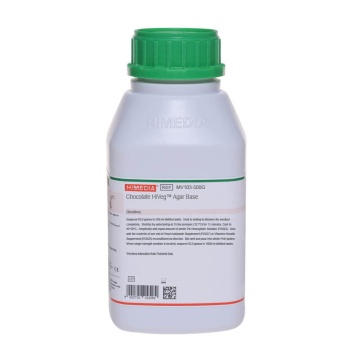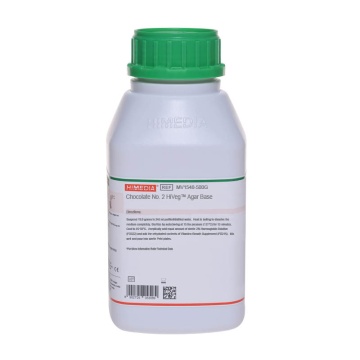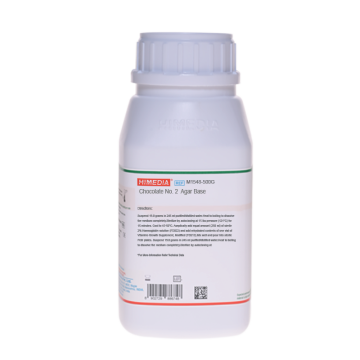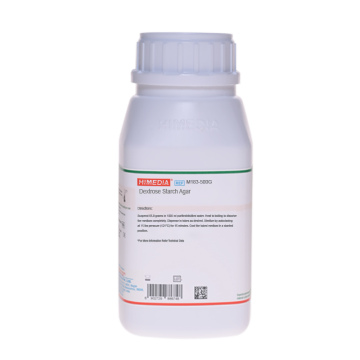 Your enquiry has been submitted
Your enquiry has been submitted
Maximum Recovery Diluent
Intended use
Maximum Recovery Diluent is a protective and isotonic medium used for maximal recovery of microorganisms from a variety of sources.
Composition**
| Ingredients | Gms / Litre |
|---|---|
| Peptone | 1.000 |
| Sodium chloride | 8.500 |
Final pH (at 25°C): 7.0±0.2
**Formula adjusted, standardized to suit performance parameters
Directions
Suspend 9.5 grams in 1000 ml purified/distilled water.Mix well and dispense into tubes or flasks as desired. Heat if necessary to dissolve the medium completely. Cool to 45-50°C. Sterilize by autoclaving at 15 lbs pressure (121°C) for 15 minutes.
Principle And Interpretation
Maximum Recovery Diluent is formulated as recommended by ISO Committee (1) for use as an isotonic diluent. Standard methods for the examination of foodstuffs require sample dilution to be carried out accurately to estimate the number of microorganisms.
Maximum Recovery Diluent combines protective effect of Peptone (5) with the osmotic balance of physiological saline (4). The low concentration of Peptone helps to maintain the organisms for 1-2 hours of dilution without multiplication. The isotonic property of the diluent ensures the recovery of organisms from various sources, which may be vulnerable in distilled water or aqueous suspensions.
Type of specimen
Clinical samples- urine samples, stool samples, Food samples.
Specimen Collection and Handling:
Put 10 gm of test sample into a sterile blender jar and add 90 ml of sterile Maximum Recovery Diluent. Operate the blender at 15,000 to 20,000 revolutions per minute. Transfer 1 ml of it to 9 ml of sterile diluent within 15 minutes and mix well. It will be 10-1 dilution. Appropriate serial dilutions can be prepared using same diluent and counts obtained by spread plate or pour plate technique. Use a positive test sample divided between new and previous diluent. Carry out duplicate tests as described in technique and look for equivalent yields of organisms between the diluent batches. Incubate the tubes with test organisms. At time zero and after 30 minutes at room temperature, subculture a loopful (0.01 ml) onto Casein Soyabean Digest Agar (M290) with 5% v/v sheep blood using streak technique. Incubate plates at 35 ± 2°C for 18-24 hours.
Warning and Precautions
In Vitro diagnostic Use. Read the label before opening the container. Wear protective gloves/protective clothing/eye protection/ face protection. Follow good microbiological lab practices while handling specimens and culture. Standard precautions as per established guidelines should be followed while handling clinical specimens. Safety guidelines may be referred in individual safety data sheets.
Limitations :
- Due to nutritional variations some organisms may show poor growth.
Performance and Evaluation
Performance of the medium is expected when used as per the direction on the label within the expiry period when stored at recommended temperature.
Quality Control
Appearance White to pale yellow homogeneous free flowing powder
Colour and Clarity of prepared medium Light yellow coloured clear solution without any precipitate
Reaction Reaction of 0.95% w/v aqueous solution at 25°C. pH: 7.0±0.2
pH 6.80-7.20
Cultural Response
Cultural characteristics observed on Soyabean Casein Digest Agar (M290), after an incubation at 35-37°C for 18-24 hours of cultures suspended in Maximum Recovery Diluent for 30 minutes.
| Organism | Inoculum (CFU) | Recovery (after 30 minutes) |
|---|---|---|
| Escherichia coli ATCC 25922 (00013*) | 50-100 | no change in numbers |
| Staphylococcus aureus subsp aureus ATCC 25923 (00034*) | 50-100 | no change in numbers |
Key: (*) Corresponding WDCM numbers.
Storage and Shelf Life
Store between 10-30°C in a tightly closed container and the prepared medium at 15-25°C. Use before expiry date on the label. On opening, product should be properly stored dry, after tightly capping the bottle in order to prevent lump formation due to the hygroscopic nature of the product. Improper storage of the product may lead to lump formation. Store in dry ventilated area protected from extremes of temperature and sources of ignition Seal the container tightly after use.
Product performance is best if used within stated expiry period.
Disposal
User must ensure safe disposal by autoclaving and/or incineration of used or unusable preparations of this product. Follow established laboratory procedures in disposing of infectious materials and material that comes into contact with clinical sample must be decontaminated and disposed of in accordance with current laboratory techniques (2,3).
Reference
- International Organization for the Standardization (ISO), ISO/DIS 6649.
- Isenberg, H.D. Clinical Microbiology Procedures Handbook 2nd Edition.
- Jorgensen,J.H., Pfaller, M.A., Carroll, K.C., Funke, G., Landry, M.L., Richter, S.S and Warnock., D.W. (2015) Manual of Clinical Microbiology, 11th Edition. Vol. 1.
- Patterson J. W. and Cassells J. A., 1963, J. Appl. Bacteriol., 26:493.
- Straker R. P. and Stokes J. L., 1957, Appl. Microbiol., 5:21.
| Product Name | Maximum Recovery Diluent |
|---|---|
| SKU | M1030 |
| Product Type | Regular |
| Physical Form | Powder |
| Origin | Animal |
| Packaging type | HDPE |
| References | 1. International Organization for the Standardization (ISO), ISO/DIS 6649. |
| Customized Product Available | No |











